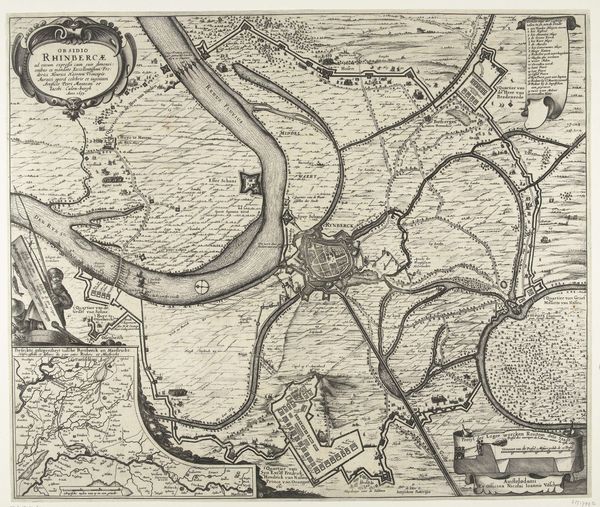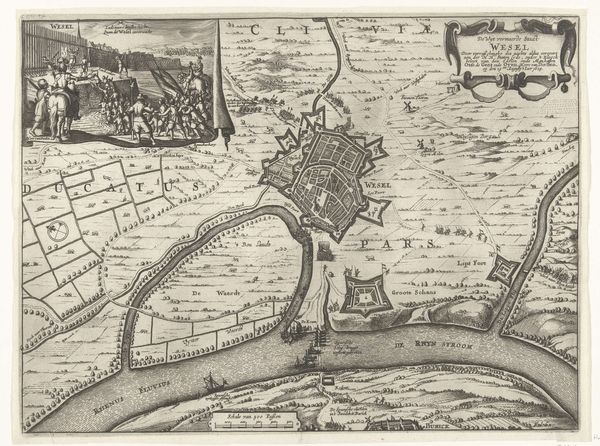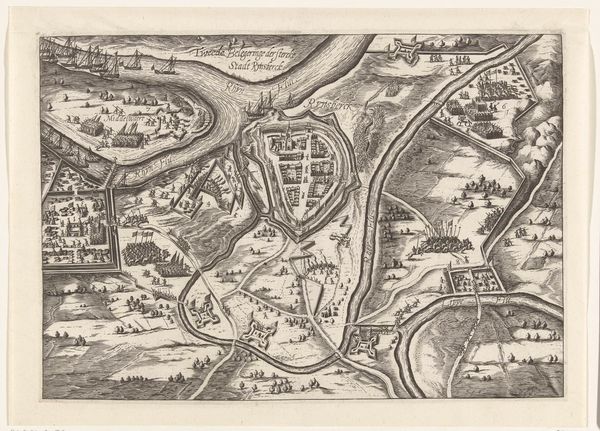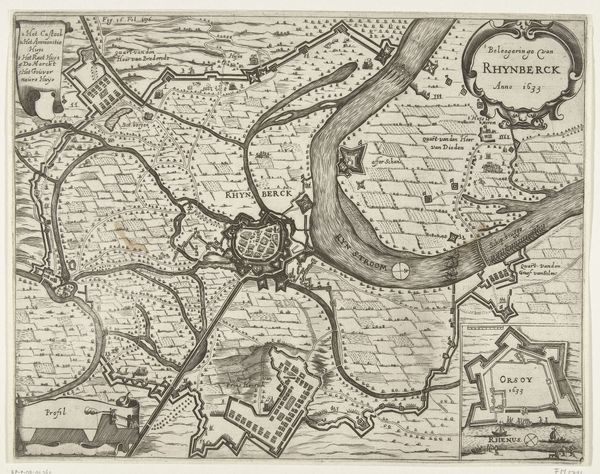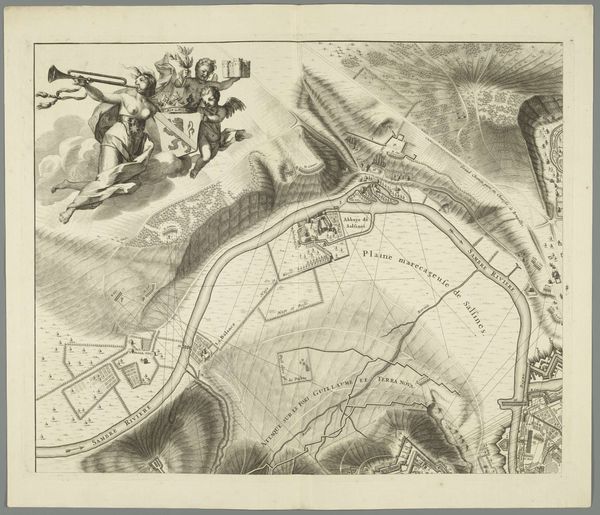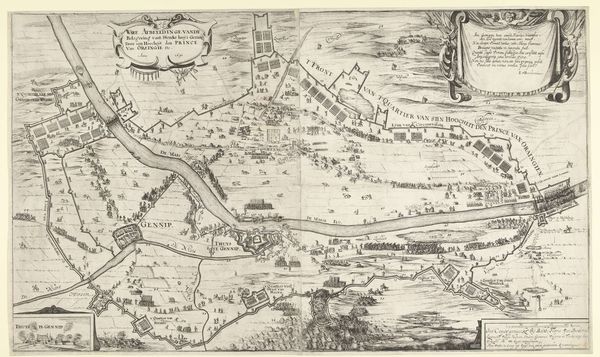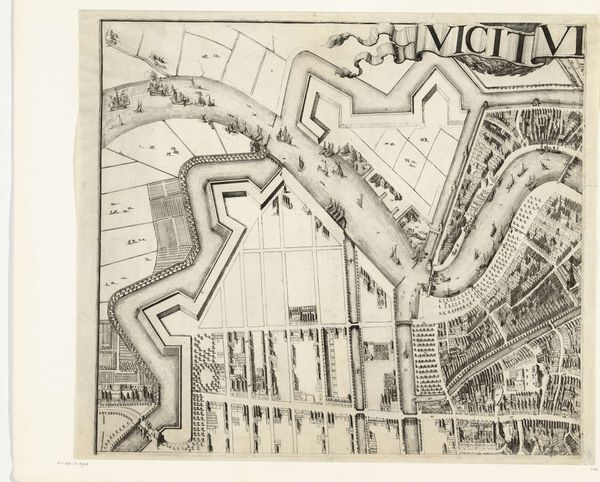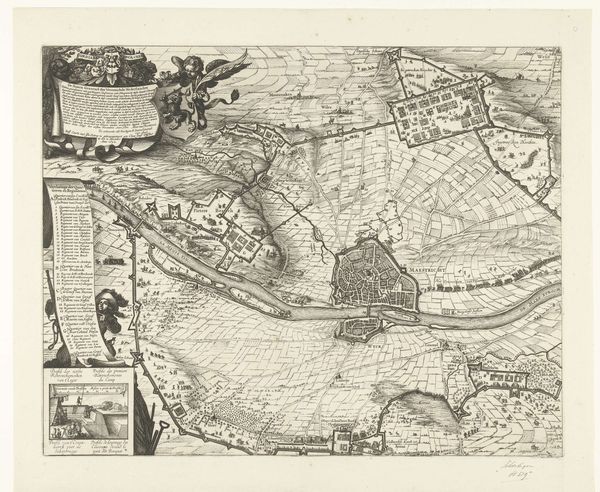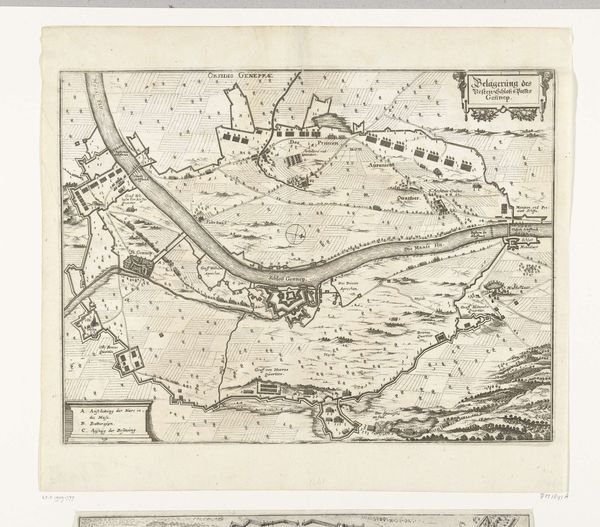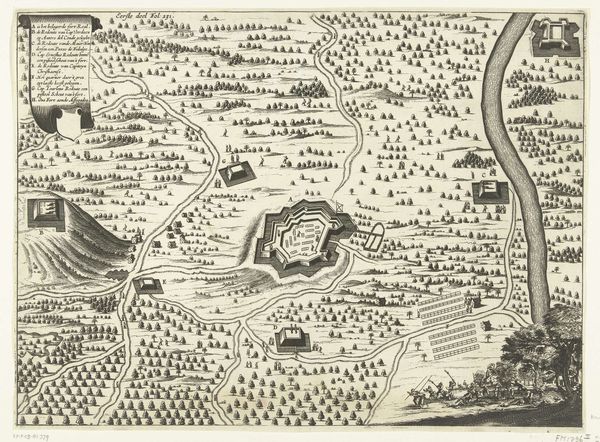
#
pen drawing
#
mechanical pen drawing
#
pen illustration
#
pen sketch
#
personal sketchbook
#
ink drawing experimentation
#
pen-ink sketch
#
pen work
#
sketchbook drawing
#
sketchbook art
Dimensions: height 271 mm, width 362 mm
Copyright: Rijks Museum: Open Domain
Curator: Looking at "Verovering van de vesting Limburg, 1632," a pen drawing dating from 1649-1651, I’m struck by the incredible detail. It's like peering through time. What are your first thoughts? Editor: Immediately, it feels cold, stark. The monochrome and bird's-eye perspective create a detached sense, almost like an objective military report. Yet there's energy too, particularly in the tiny figures scattered around. Curator: That starkness is interesting, especially considering the events depicted. Sieges were emotionally charged events. What cultural memory did renderings like these serve at the time? What feelings would they stir? Editor: I suspect these weren't made for mass consumption as such but for documenting military strategy and results. The formal visual language presents the conquest not as brutality, but as ordered, almost inevitable progress. The aesthetic of order serves to legitimize power. Curator: Precisely. And if we delve into the iconography of siege warfare during that period, we see an ongoing tension between violence and technical prowess. Notice how the depiction of Limburg itself is somewhat idealized? Its clean lines hint at an architectural promise despite the assault. Editor: It's as if the town is simultaneously victim and prize. You know, what interests me is how cartography itself was becoming such a potent symbol of dominion during this era. Mapping meant claiming and knowing—making the foreign knowable. Curator: That idea of ‘making knowable’ is crucial. Maps create power dynamics. To visually represent is to exercise control. Note how different visual signs designate civilian spaces versus military deployments – creating a legible language of occupation and power. Editor: It's almost diagrammatic in its clarity. But these aren’t simply neutral documents, right? Even in this apparent objectivity, the choice of what to include and emphasize—the lines of fire, troop placements, symbolic labeling – reveals intent. Curator: Absolutely, every visual element serves a strategic, even propagandistic purpose. How these symbols shaped popular perception is interesting too, normalizing the mechanics of military control through images. Editor: Thinking about it, what seems striking to me is how familiar some of these visual conventions still are in contemporary war reportage. Different medium, same psychological effect? Curator: Yes, these strategies still carry weight! A visual blueprint, rationalizing dominance, reducing complexity to digestible elements—a legacy carried forth into contemporary society. A dispassionate view on forceful events. Editor: Fascinating. Makes you consider the choices we make when documenting conflict, doesn’t it? A technical drawing speaks louder than it seems.
Comments
No comments
Be the first to comment and join the conversation on the ultimate creative platform.
